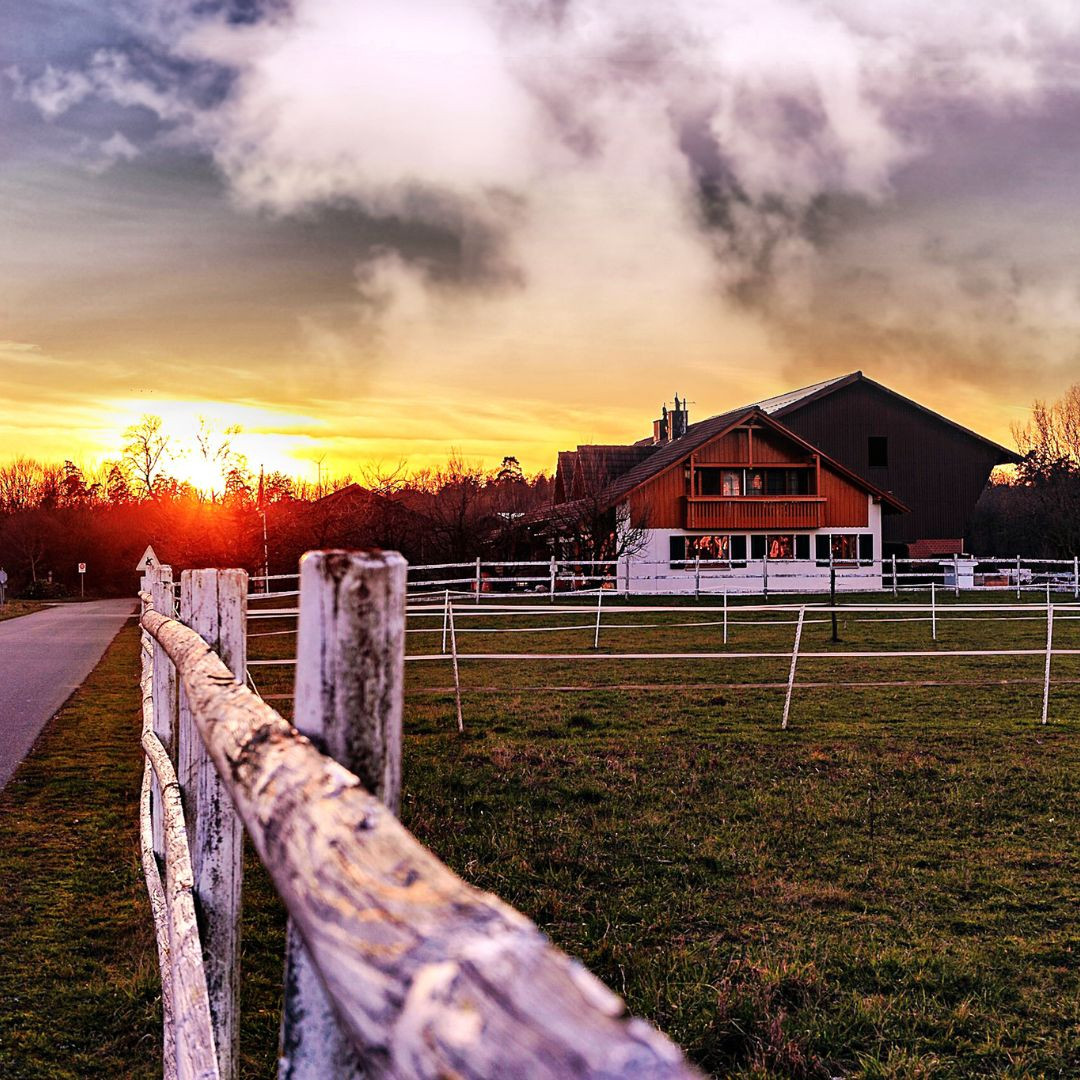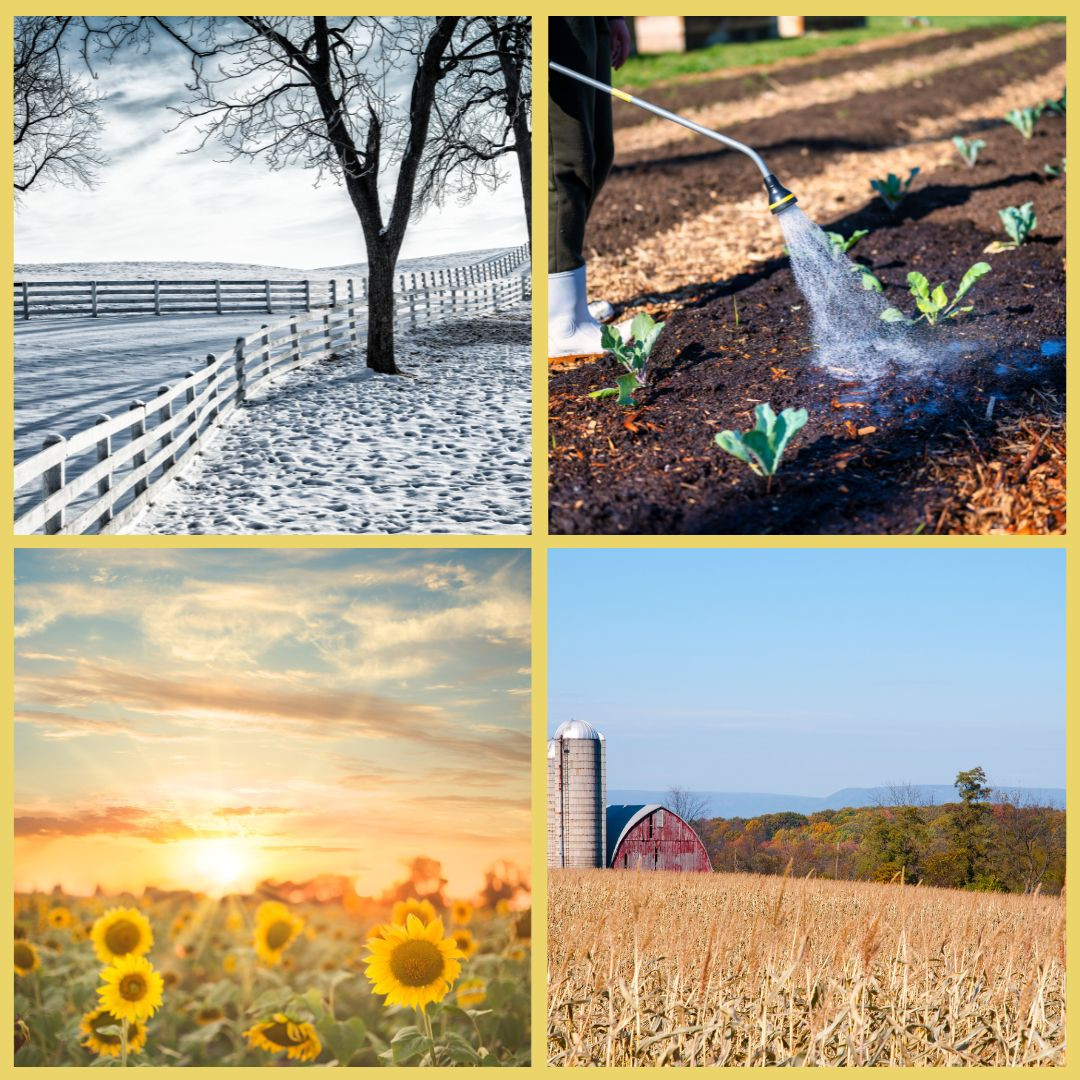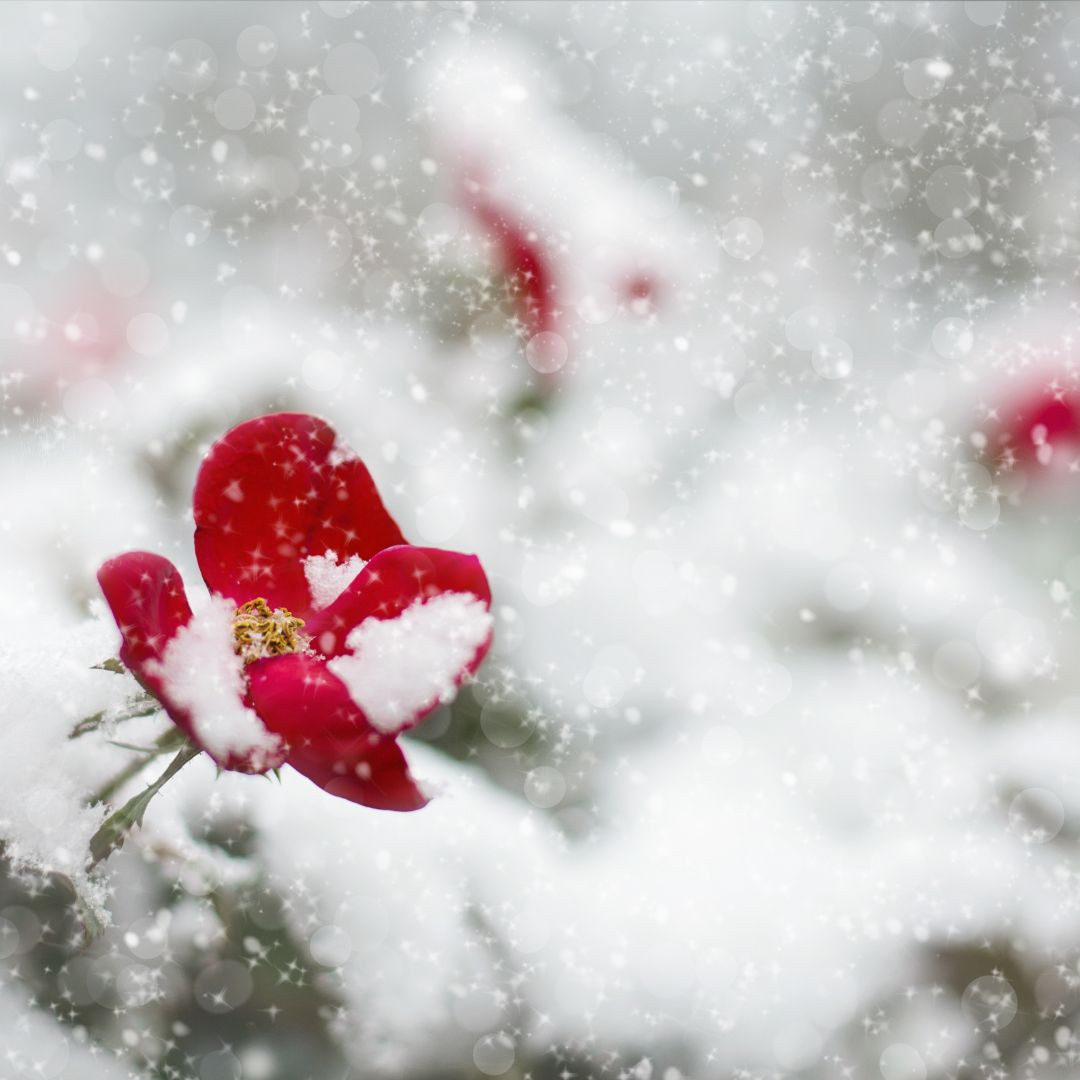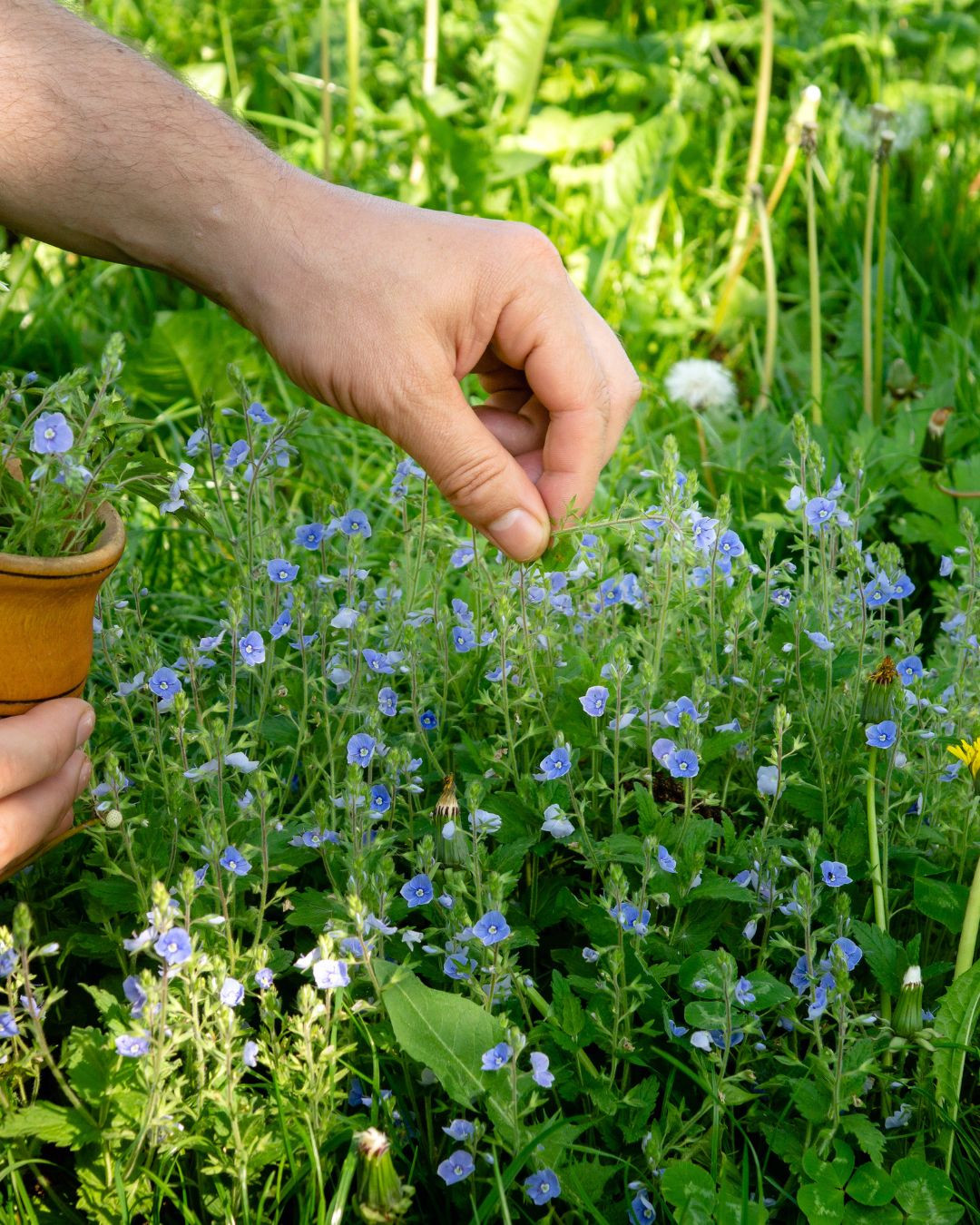
This post may contain affiliate links, which means that I may receive a commission if you make a purchase using these links, with NO additional cost to you.
Let's be real. When I first thought about growing my own food, I pictured my grandma’s massive garden. The idea of starting a garden that large felt like just another impossible task on an already impossible list.
But here's the truth I've learned: Self-sufficiency doesn't happen overnight. It starts with one seed, one small plot, and one tiny victory. I did start that garden, but it was small and manageable.
Growing your own food isn't about creating a Pinterest-perfect garden. It's about taking back a little control in a world that often feels chaotic. It's about knowing exactly where your food comes from. It's about reducing your grocery bill, even if it's just a few dollars each week.
Start small. Really small.
Maybe that's a few herb pots on your kitchen windowsill. Perhaps it's three tomato plants in containers on your back porch. You don't need acres of land or hours of free time. You just need a tiny bit of hope and a willingness to try.
The benefits go beyond just food:
- You'll save money on groceries
- You'll know exactly what's in your food
- Your kids can learn about where food comes from
- It's a stress-relieving activity that connects you to the earth
- You'll feel a sense of accomplishment with each harvest
Pro tip for the overwhelmed farm wife: You don't have to be perfect. Some plants will die. Some seeds won't sprout. And that's okay. Gardening is about learning, not achieving some impossible standard of agricultural excellence.
Want to make this journey a little easier? I've created a simple planting log to help you track your garden's progress, celebrate your wins, and learn from your experiences.
You can grab that for free here.
Remember, self-sufficiency isn't about doing everything at once. It's about doing something. One seed. One plant. One small step at a time.
You've got this, farm wife. Your garden—and your journey—starts now.
As I've grown as an entrepreneur, mom, gardener, and livestock owner, I struggled to find a planner that met my needs and kept me organized. So, I MADE MY OWN. You can look at it on the link below and buy it on Amazon.
Don't want the whole calendar part? I got you! I pulled the gardening and animal care pages out and put them in a book all their own.
Wanting a community to lean into? Join the FREE Thriving Through Farm Life: Wife’s Support Network! In our community, we embrace the challenges of farm life and provide a supportive space for wives facing the complexities of managing a family farm. Whether you're navigating financial pressures, day-to-day operations, or seeking ways to create a thriving home, we're here for you. Explore garden and preservation tips for cultivating your oasis, share insights on animal care, and discover practical family budgeting strategies. Together, let's grow through challenges, flourish authentically, and sow the seeds for a resilient and thriving farm life. Join us on this journey of resilience and abundance!
Starting a garden doesn't have to be hard! I gathered all the tips I've learned over my gardening seasons and made them into a simple course to jump-start your gardening life.
I've had 3 very different pregnancies. After the first traumatic birth, I learned how to care for my body naturally preventing common pregnancy and birth problems before they arise. This quick course will give you the tools you need to have a natural healthy pregnancy, labor, and delivery. My first pregnancy I had a normal western medicine pregnancy. My second? I flipped to completely natural, no medicine. Bonus: Preventing Preeclampsia Without Aspirin & Healing from Birth Trauma
practical family budgeting strategies. Together, let's grow through challenges, flourish authentically, and sow the seeds for a resilient and thriving farm life. Join us on this journey of resilience and abundance!
Starting a garden doesn't have to be hard! I gathered all the tips I've learned over my gardening seasons and made them into a simple course to jump-start your gardening life.
I've had 3 very different pregnancies. After the first traumatic birth, I learned how to care for my body naturally preventing common pregnancy and birth problems before they arise. This quick course will give you the tools you need to have a natural healthy pregnancy, labor, and delivery. My first pregnancy I had a normal western medicine pregnancy. My second? I flipped to completely natural, no medicine. Bonus: Preventing Preeclampsia Without Aspirin & Healing from Birth Trauma
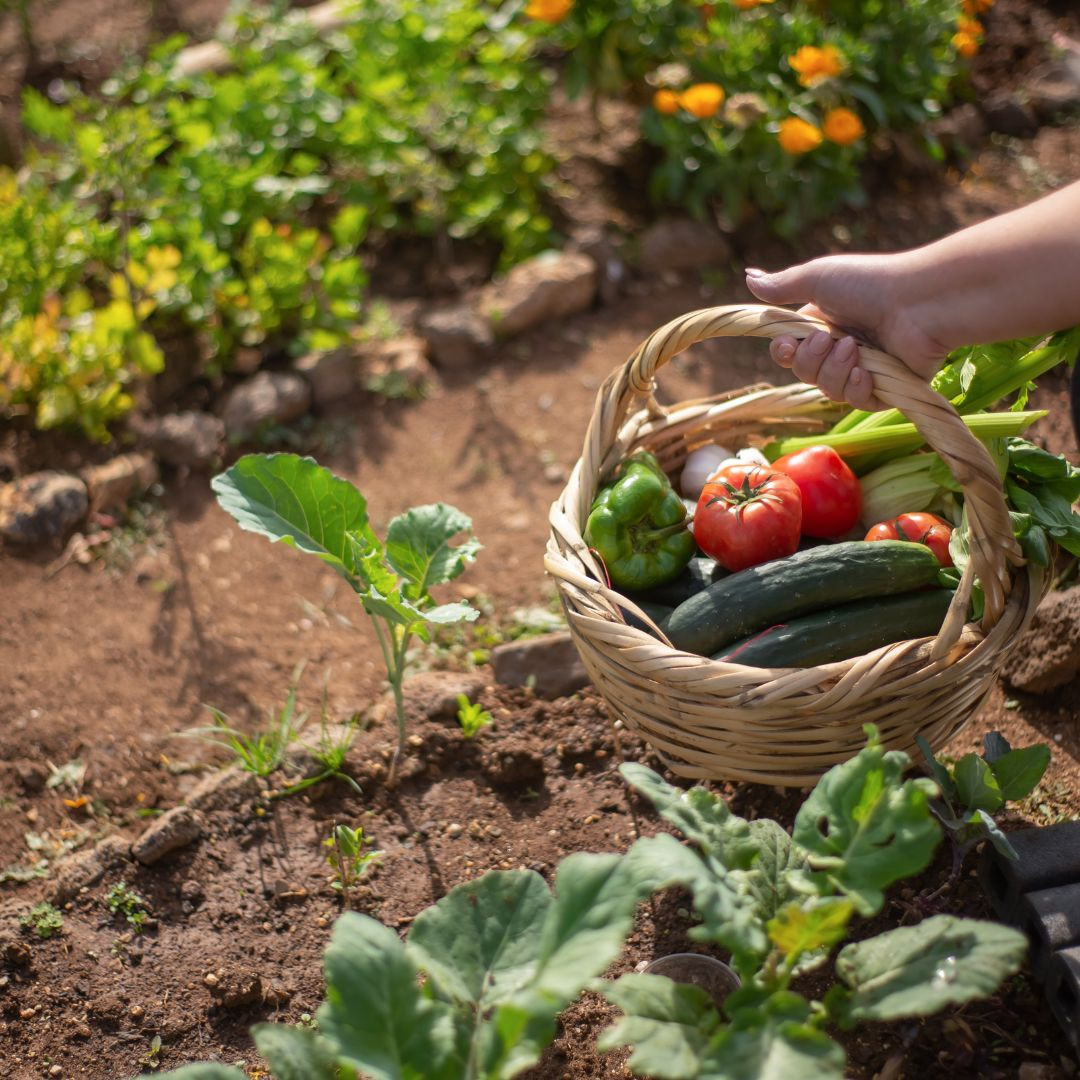
This post may contain affiliate links, which means that I may receive a commission if you make a purchase using these links, with NO additional cost to you.
As a farm wife juggling so many responsibilities, I know your time and energy are precious. But February is the perfect month to lay the groundwork for a successful home garden that can help stretch your grocery budget. Here are some manageable steps you can take, even with your busy schedule:
Indoor Planning & Starting
Keep it simple - grab a notebook during your morning coffee or evening quiet time to:
- Write down your family's most-used vegetables and fruits. Focus on what your children actually eat and what's expensive at the store. This helps avoid wasting precious time and resources on crops that won't serve your family.
- Check your seed inventory from last year before buying anything new. In tough financial times, we need to use what we have first. Those slightly older seeds will likely still germinate just fine.
Easy Indoor Seed Starting
If you have a sunny window or simple shop light:
- Start onions and leeks now - they need the longest growing time and can save significant grocery money.
- Begin cold-hardy herbs like parsley and thyme.
- Hold off on tomatoes and peppers until March - starting too early leads to leggy plants.
Outdoor Preparations
On warmer February days when you have 15-30 minutes:
- Walk your garden space and plan where things will go. Consider what failed or thrived last year.
- Start collecting cardboard from farm deliveries to lay down for weed suppression. This is especially good for new garden areas.
- Build new garden areas and lay compost.
Budget-Friendly Tips
- Save egg cartons and yogurt containers for seed-starting.
- Use old feed bags or tarps for garden cover, or seed barrier instead of buying new.
- Connect with other farmwives to share seeds and supplies.
- Start small - a few well-tended beds are better than an overwhelming large garden.
Looking Ahead
- Create a simple schedule for March planting.
- Plan your garden close to your house - busy moms need convenience.
- Consider involving your children in seed starting as part of their learning. For older kids, you can give them their own space to tend.
Remember, growing even a portion of your own food is a victory. Don't let perfect be the enemy of good enough. Start with what you can manage, and know that every small step toward self-sufficiency helps your family's food security.
For all the details on planting schedules and low-maintenance garden designs that work around farm life, check out my Gardening Basics Course.
As I've grown as an entrepreneur, mom, gardener, and livestock owner, I struggled to find a planner that met my needs and kept me organized. So, I MADE MY OWN. You can look at it on the link below and buy it on Amazon.
Don't want the whole calendar part? I got you! I pulled the gardening and animal care pages out and put them in a book all their own.
Wanting a community to lean into? Join the FREE Thriving Through Farm Life: Wife’s Support Network! In our community, we embrace the challenges of farm life and provide a supportive space for wives facing the complexities of managing a family farm. Whether you're navigating financial pressures, day-to-day operations, or seeking ways to create a thriving home, we're here for you. Explore garden and preservation tips for cultivating your oasis, share insights on animal care, and discover practical family budgeting strategies. Together, let's grow through challenges, flourish authentically, and sow the seeds for a resilient and thriving farm life. Join us on this journey of resilience and abundance!
Starting a garden doesn't have to be hard! I gathered all the tips I've learned over my gardening seasons and made them into a simple course to jump-start your gardening life.
I've had 3 very different pregnancies. After the first traumatic birth, I learned how to care for my body naturally preventing common pregnancy and birth problems before they arise. This quick course will give you the tools you need to have a natural healthy pregnancy, labor, and delivery. My first pregnancy I had a normal western medicine pregnancy. My second? I flipped to completely natural, no medicine. Bonus: Preventing Preeclampsia Without Aspirin & Healing from Birth Trauma
practical family budgeting strategies. Together, let's grow through challenges, flourish authentically, and sow the seeds for a resilient and thriving farm life. Join us on this journey of resilience and abundance!
Starting a garden doesn't have to be hard! I gathered all the tips I've learned over my gardening seasons and made them into a simple course to jump-start your gardening life.
I've had 3 very different pregnancies. After the first traumatic birth, I learned how to care for my body naturally preventing common pregnancy and birth problems before they arise. This quick course will give you the tools you need to have a natural healthy pregnancy, labor, and delivery. My first pregnancy I had a normal western medicine pregnancy. My second? I flipped to completely natural, no medicine. Bonus: Preventing Preeclampsia Without Aspirin & Healing from Birth Trauma

This post may contain affiliate links, which means that I may receive a commission if you make a purchase using these links, with NO additional cost to you.
Hey there! If you're like me, juggling farm life, kids, and trying to stretch every dollar, planting fall bulbs can be a game-changer. Not only do they add beautiful color to your garden early in the spring, but some of them—like garlic and onions—can help you save on groceries come spring. Let's dig into how to make your garden flourish with minimal effort this fall.
Why Plant Bulbs in the Fall?
First off, fall is the perfect time to plant bulbs. Many bulbs need a cold period to bloom or develop properly. Plus, with the fall rains and cooler temperatures, bulbs get the chance to establish strong roots before winter sets in. Come springtime, they'll grow quickly, giving you a gorgeous, low-maintenance garden.
Once they're planted, bulbs are pretty hands-off. Perfect for those of us with busy schedules and a million other things to worry about, like harvest. It’s like planting a bit of hope for future harvests and blooms.
Best Garden Bulbs to Plant in the Fall
Here are some tried-and-true favorites that are both easy and rewarding:
- Tulips: These come in a wide range of colors and add vibrant, early-spring color to any garden. They're like a breath of fresh air after a long winter.
- Daffodils: These cheerful, deer-resistant flowers are hardy and easy to grow. Their yellow or white blooms will brighten up any space.
- Crocuses: Perfect for adding a pop of color to borders or flower beds, even through late winter snow. They’re the little warriors of the garden.
- Hyacinths: Known for their strong fragrance and beautiful clusters of flowers, they’re great for garden beds or containers. Plus, the smell is heavenly!
- Alliums: These tall, spherical flowers make a bold statement, adding height and texture to your garden. They’re a conversation starter for sure.
- Garlic: Super easy to grow and perfect for fall planting. Garlic needs a cold period to develop strong, flavorful bulbs by summer. Plus, you'll save money at the grocery store.
- Onion Sets: Plant these, NOT seeds, in the fall for an early spring harvest. They’ll establish roots over winter, giving you a head start on fresh homegrown onions.
How to Plant Fall Bulbs
1. Choose a Location
Pick a sunny, well-drained spot for both flowers and vegetables. Garlic and onions, in particular, need full sun and loose soil.
2. Prepare the Soil
Work in compost or organic matter to ensure good drainage. Loose soil helps bulbs develop strong roots. Think of it as giving them a cozy bed to snuggle into for the winter.
3. Planting Depth and Spacing
- Flower Bulbs: Plant them 2-3 times their height deep.
- Garlic Cloves: Should be 2-3 inches deep.
- Onion Sets: Only need about 1 inch deep.
Space them 4-6 inches apart to give them room to grow.
4. Water and Mulch
Water the bulbs after planting to help them settle. Mulch helps retain moisture and protects the bulbs from frost. You’ll need about 4-5 inches of mulch over the garlic and onions to help them overwinter, especially if you’re in zone 5 or colder. If you forget to water them later, don't sweat it. They'll probably be just fine. It's actually easier to overwater these little warriors than under water them.
Caring for Bulbs Over Winter
Once planted, bulbs need minimal care. Protect them from extreme cold with mulch and avoid overwatering in wet winter conditions. Garlic and onions will begin to sprout in early spring, making them some of the first signs of new growth.
By planting bulbs in the fall, you’re setting yourself up for a colorful and productive garden with minimal effort. With flower bulbs to enjoy and garlic and onions to harvest, you can brighten up your space and boost your food security with ease.
Remember, every small step you take in your garden is a step towards a thriving, self-sufficient life. You've got this, and we're here cheering you on every step of the way. Happy planting, and may your garden be as vibrant as your spirit!
Wanting a community to lean into? Join the FREE Thriving Through Farm Life: Wife’s Support Network! In our community, we embrace the challenges of farm life and provide a supportive space for wives facing the complexities of managing a family farm. Whether you're navigating financial pressures, day-to-day operations, or seeking ways to create a thriving home, we're here for you. Explore gardening and preserving tips for cultivating your own oasis, share insights on animal care, and discover practical family budgeting strategies. Together, let's grow through challenges, flourish authentically, and sow the seeds for a resilient and thriving farm life. Join us on this journey of resilience and abundance!
As I've grown in my journey as an entrepreneur, mom, gardener, and livestock owner, I struggled to find a planner that met my needs and kept me organized. So, I MADE MY OWN. You can look at it on the link below and buy it on amazon below.
Don't want the whole calendar part? I got you! I pulled the gardening and animal care pages out and put them in a book all their own.
Starting to garden doesn't have to be hard! I gathered all the tips I've learned over my gardening learning curve and made them into a simple course to jump start your gardening your life.
Supporting Your Family Naturally from the Inside Out community!! This community is for Mommas, looking to Support Your Family from Nature for Wellness. Tips range from nutrition, herbals, detoxing, natural cleaning, and essential oils. Basically, all the things I’ve learned slowly over the past 5+ years of my journey. We have moved off Facebook, to better serve our community and be able to discuss openly options for providing for your family in the best way possible.
Join the FREE Community
Join the FREE Community
I've had 3 very different pregnancies. After the first traumatic birth, I learned better and how to care for my body naturally and prevent common pregnancy and birth problems before they arise. This quick course will get you the tools you need to have a naturally healthy pregnancy, labor, and delivery. My first pregnancy I had a normal western medicine all the things pregnancy. My second? I flipped to completely natural, no medicine. Bonus: Preventing Preeclampsia Without the Aspirin & Healing from Birth Trauma
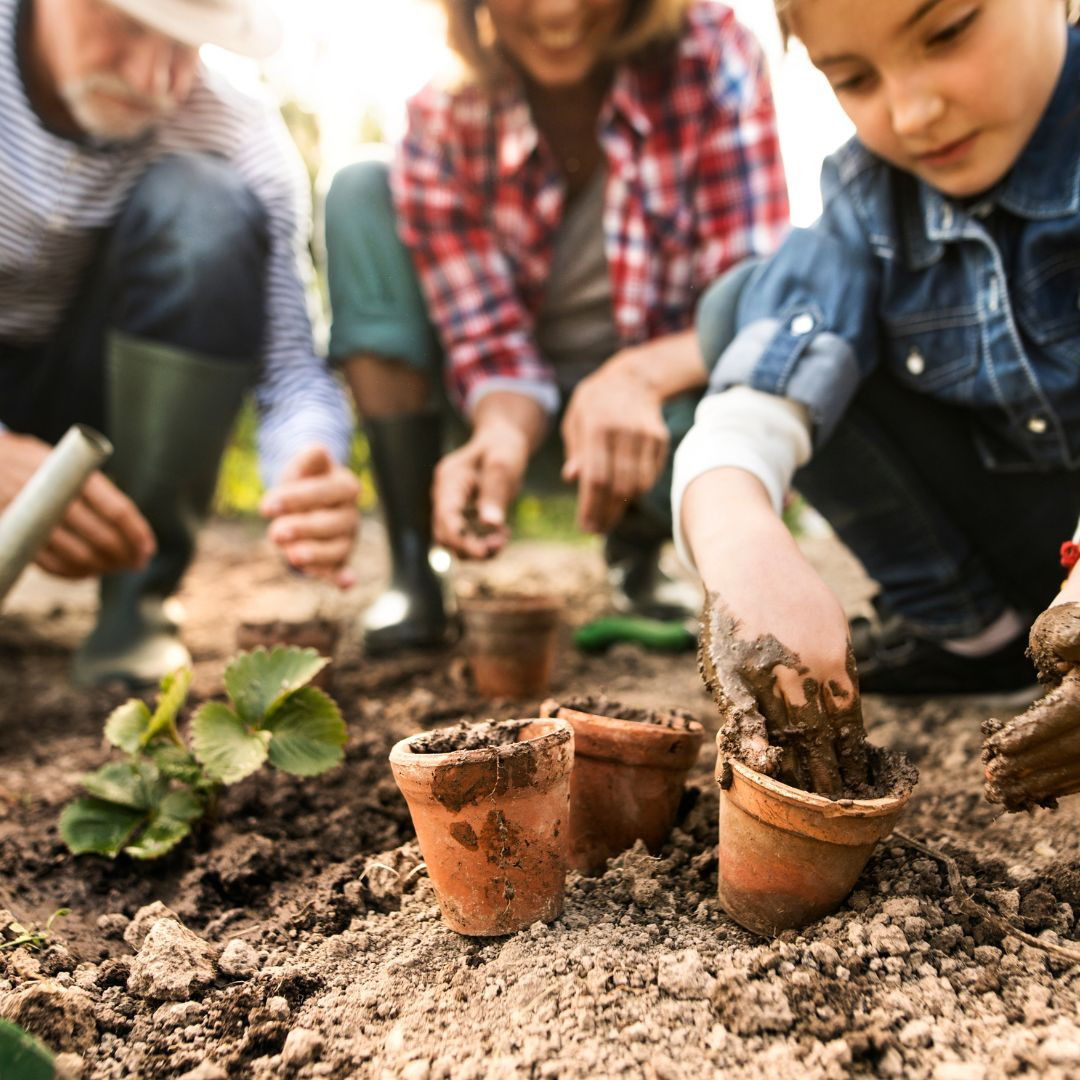
This post may contain affiliate links, which means that I may receive a commission if you make a purchase using these links, with NO additional cost to you.
In the balancing act of family life, finances, and managing a home, the thought of cultivating your own garden to feed your family might appear overwhelming. Yet, with a sprinkle of planning and a dash of dedication, this venture transforms into a deeply fulfilling endeavor. Cultivating your garden provides not only the joy of nourishing your family but also serves as an effective strategy for budgeting better and tackling food scarcity head-on.
Start on Solid Ground: Embark on your gardening adventure on a modest scale. Opt for a handful of foundational crops that promise ease of cultivation alongside plentiful nutrition. Staples such as tomatoes, lettuce, carrots, and beans make perfect partners for the beginner gardener. Selecting crops should be influenced by your family's taste buds and nutritional needs.
Maximize Your Plot: Whether your farm sprawls generously or you're working with more limited spaces, every nook and cranny holds potential for growth. Raised beds, container gardening, or transforming idle patches into vibrant veggie plots are great ways to extract the most out of your available space. Techniques like vertical gardening can help in getting the most out of limited spaces.
Tread Lightly and Grow: Adopting sustainable practices in your garden isn’t just good for the environment; it's also a wise move for ensuring your garden’s vitality in the long run. Simple methods like composting, companion planting, natural pest control, and water conservation can significantly boost your garden’s health and help shave some dollars off your expenses.
A Family-Grown Feast: Inviting your children to participate in the garden's lifecycle – from seed planting to kitchen prep – isn’t just educational; it’s a way to cultivate a deeper appreciation for homegrown food. Such activities nurture life skills and foster a profound bond with nature.
Continuous Bounty: Implement succession planting to maintain a steady flow of produce. By constantly introducing new crops post-harvest, you're ensuring an endless supply of freshness. Remember, timing is key, especially with quick-to-grow greens like lettuce or spinach. If you live somewhere where the growing season is short, succession planting is harder for longer season crops like brassicas, tomatoes and peppers.
Preserving the Prosperity: Extend the life and enjoyment of your yield through preservation techniques such as canning, freezing, or drying. This ensures your pantry stays stocked with your garden’s gifts all year round.
Celebrate Each Step: Every little achievement deserves recognition. From the thrill of picking your first homegrown tomato to relishing a meal crafted entirely from your garden’s yield, these are the moments that underscore the richness gardening brings to family life.
While the garden path may have its set of hurdles, the fruits of your labor are immensely rewarding. By leaning into simplicity and holistic practices, the experience of feeding your family from your own backyard is not just practical but deeply enriching.
Need more guidance or wishing to connect with fellow farm wives in the same boat? Join our free support network on Facebook, Thriving Through Farm Loss: Wife’s Support Network, and explore more gardening insights through our blog series. Here’s to a bountiful, homegrown life!
Wanting a community to lean into? Join the FREE Thriving Through Farm Loss: Wife’s Support Network! In our community, we embrace the challenges of farm life and provide a supportive space for wives facing the complexities of managing a family farm. Whether you're navigating financial pressures, day-to-day operations, or seeking ways to create a thriving home, we're here for you. Explore gardening tips for cultivating your own oasis, share insights on animal care, and discover practical family budgeting strategies. Together, let's grow through challenges, flourish authentically, and sow the seeds for a resilient and thriving farm life. Join us on this journey of resilience and abundance!
As I've grown in my journey as an entrepreneur, mom, gardener, and livestock owner, I struggled to find a planner that met my needs and kept me organized. So, I MADE MY OWN. You can look at it on the link below and buy it on amazon below.
Don't want the whole calendar part? I got you! I pulled the gardening and animal care pages out and put them in a book all their own.
Starting to garden doesn't have to be hard! I gathered all the tips I've learned over my gardening learning curve and made them into a simple course to jump start your gardening your life.
Supporting Your Family Naturally from the Inside Out community!! This community is for Mommas, looking to Support Your Family from Nature for Wellness. Tips range from nutrition, herbals, detoxing, natural cleaning, and essential oils. Basically, all the things I’ve learned slowly over the past 5+ years of my journey. We have moved off Facebook, to better serve our community and be able to discuss openly options for providing for your family in the best way possible.
Join the FREE Community
Join the FREE Community
I've had 3 very different pregnancies. After the first traumatic birth, I learned better and how to care for my body naturally and prevent common pregnancy and birth problems before they arise. This quick course will get you the tools you need to have a naturally healthy pregnancy, labor, and delivery. My first pregnancy I had a normal western medicine all the things pregnancy. My second? I flipped to completely natural, no medicine. Bonus: Preventing Preeclampsia Without the Aspirin & Healing from Birth Trauma
For more on wellness tips click here:
For more on homesteading on your budget click here:
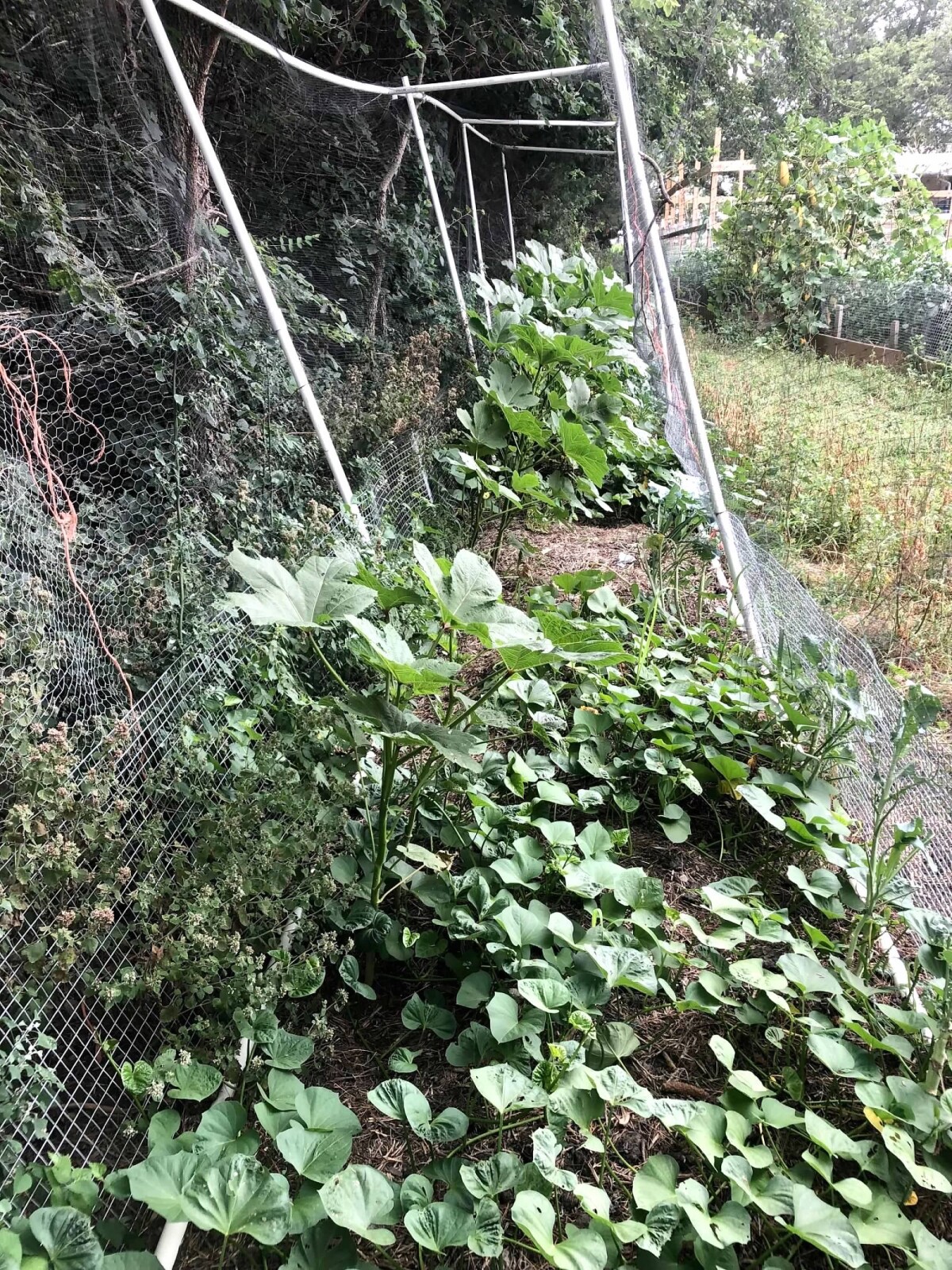
This post may contain affiliate links, which means that I may receive a commission if you make a purchase using these links, with NO additional cost to you.
Summer is an excellent time to tend to your garden. Whether you’ve been gardening for years or are just starting out, there are a few must-dos that will make sure your garden blooms and bears fruit all summer long. Let’s take a look at some of the tasks that can help you get the most out of your summer garden this year.
Watering & Weeding
The two most important things you can do for your garden in the summer are water and weed, both of which should be done regularly. Watering is essential for keeping plants alive and healthy, especially during the hot summer months. Make sure to check soil moisture levels before watering, as overwatering can be just as damaging as not watering enough. As for weeding, it goes without saying that these pesky plants need to be removed from your garden or else they will choke out other plants and steal nutrients from them.
Check Canning Jars & Freezer Supplies
If you plan on preserving any of your harvest, make sure you have enough jars and lids on hand. Check each one for cracks or chips and replace if needed. While you’re at it, go ahead and check freezer supplies like plastic bags or containers so you can freeze any harvests that won’t fit into jars, or you don’t want to can.
Harvest & Plant Early Crops
Now is the perfect time to get started harvesting some of those short season crops like lettuce, radishes, kale and spinach - these will be ready before the heat of summer kicks in. You should also think about starting any fall seedlings like broccoli and cauliflower now too - these will take a bit longer, but they will be worth it come harvest time! Plant Fall Crops Mid-Summer, once midsummer rolls around (around July), it’s time to start planting those fall crops like broccoli - you want them planted early enough so that they have plenty of time to mature before frost hits!
Summer is a great time of year to tend to your garden! With just a few simple steps—like watering and weeding regularly, checking canning jars and freezer supplies for preserving harvests, and starting fall seedlings—you can ensure that your garden provides plenty of fresh produce all summer long. So don't wait another minute; get out there and get gardening!
As I've grown in my journey as an entrepreneur, mom, gardener, and livestock owner, I struggled to find a planner that met my needs and kept me organized. So I MADE MY OWN. You can take a look at it on the link blow and buy it on amazon below
Don't want the whole calendar part? I got you! I pulled the gardening and animal care pages out and put them in a book all their own.
Wanting a community to lean into? Join the FREE Helping Your Family Homestead for Food group! This community is for the Mommas, looking to stay home and raise their kids, but unsure how to keep everyone fed and make ends meet. I share tips from my journey from the office, to half the income and feeding my family from home, while maintaining good nourishing food. Tips include: gardening, bulk buying, caning,/preserving, livestock, homesteading, and home remedies. Your family is precious and this group is to help you gain the knowledge and tools to keep your family well and not reliant on outside professionals. Remedies and tips are easy and simple for the busy momma, time is precious after all, including pregnancy, birth, young kids, and illness. Trust your Momma gut again! This community offers the resources + community you need to help get started on your journey and prepare for whatever future you envision.
Starting to garden doesn't have to be hard! I gathered all the tips I've learned over my gardening learning curve and made them into a simple course to jump start your gardening your life.
Supporting Your Family Naturally From the Inside Out community!! This community is for the Mommas, looking to Support Your Family from Nature for Wellness. Tips range from nutrition, herbals, detoxing, natural cleaning, and essential oils. Basically all the things I’ve learned slowly over the past 5+ years if my journey. We have moved off Facebook, so to better serve our community and be able to discuss openly option for providing for your family in the best way possible.
Join the FREE Community
Join the FREE Community
I've had 3 very different pregnancies. After the first traumatic birth, I learned better and how to care for my body naturally and prevent common pregnancy and birth problems before they arise. This quick course will get you the tools you need to have a naturally healthy pregnancy, labor, and delivery. My first pregnancy I had a normal western medicine all the things pregnancy. My second? I flipped to completely natural, no medicine. Bonus: Preventing Preeclampsia Without the Aspirin & Healing from Birth Trauma
Click here to get the stories straight to your email:
For more on wellness tips click here:
For more on homesteading on your budget click here:
For more simple DIY updates click here:

This post may contain affiliate links, which means that I may receive a commission if you make a purchase using these links, with NO additional cost to you.
Spring is coming, and with it comes a whole new set of gardening tasks. Now is the time to get busy in the garden! Whether you’re a mom or a beginner gardener, there are certain things that need to be done in the springtime to make sure your garden is ready for the upcoming growing season. Let’s take a look at what needs to be done and why.
Till the Garden if Needed
If you haven’t done so already, now is a great time to till your garden beds if needed. Tilling helps break up any compaction in the soil caused by winter weather and encourages drainage, aeration, and nutrient absorption. This process will help ensure that all your plants get off to a good start. Just be sure not to over-till as this can damage plant roots and beneficial organisms such as earthworms.
Source Mulch
Another important step in prepping your garden for spring is sourcing mulch. Mulching helps keep down weeds and retain moisture around your plants while making your garden look neat and tidy at the same time. You can use anything from straw to shredded bark chips as mulch material—just make sure it's organic and free of any chemicals or other contaminants that could harm your plants.
Check Soil Temperatures
Before planting anything, it’s important to check soil temperatures with a thermometer or even a handheld infrared thermometer gun (which will give you an accurate reading within seconds). Some cold tolerant plants, like potatoes, carrots, and lettuce can be planted as soon as the soil reaches 50 degrees Fahrenheit but most vegetables won't start germinating until temperatures reach about 70 degrees Fahrenheit or higher. Knowing when it's safe to start planting will help ensure success with your vegetables later on.
Plan Where You're Going To Plant Everything
Once you know what you want to plant and when it's safe to do so, take some time to plan where everything should go in the garden. Different types of plants have different needs—some thrive in full sun while others prefer partial shade—so make sure you do some research before deciding where each type should go in order to maximize their potential yields come harvest time! This also saves you time when you are trying to plant with kids helping.
Clean Out Any Flower Beds But Wait Until The Bees Wake Up
Finally, take some time to clean up any flower beds that may have been neglected over winter but wait until after bees wake up before doing so! Bees tend to hide under dead leaves during colder months for protection from predators like birds but they'll be coming out soon enough when temperatures rise above freezing (usually around mid-April). Once they're back out buzzing around flowers again, then it's safe for you to clean up without fear of disturbing them!
Start Planting!
Once everything else is taken care of—the tilling is done, mulch is sourced, and soil temperatures have been checked—it’s finally time to start planting! Pay attention to seed package instructions and plant accordingly; some seeds may need light or darkness in order to germinate properly while others may need warmer or cooler conditions than expected. Keep an eye on them after they are planted so that you know when it's time for waterings or other maintenance tasks like weeding or pest control.
Getting ready for spring gardening doesn't have to be daunting task! Taking care of these basic tasks will help ensure that your garden is healthy throughout the entire growing season. Till if needed, source mulch, check soil temperatures, plan where to plant, clean out any flower beds but wait until the bees wake up, and get planting!. With these steps in mind, you'll be well on your way towards having a beautiful backyard oasis! Happy Gardening!
As I've grown in my journey as an entrepreneur, mom, gardener, and livestock owner, I struggled to find a planner that met my needs and kept me organized. So I MADE MY OWN. You can take a look at it on the link blow and buy it on amazon below
Don't want the whole calendar part? I got you! I pulled the gardening and animal care pages out and put them in a book all their own.
Wanting a community to lean into? Join the FREE Helping Your Family Homestead for Food group! This community is for the Mommas, looking to stay home and raise their kids, but unsure how to keep everyone fed and make ends meet. I share tips from my journey from the office, to half the income and feeding my family from home, while maintaining good nourishing food. Tips include: gardening, bulk buying, caning,/preserving, livestock, homesteading, and home remedies. Your family is precious and this group is to help you gain the knowledge and tools to keep your family well and not reliant on outside professionals. Remedies and tips are easy and simple for the busy momma, time is precious after all, including pregnancy, birth, young kids, and illness. Trust your Momma gut again! This community offers the resources + community you need to help get started on your journey and prepare for whatever future you envision.
Starting to garden doesn't have to be hard! I gathered all the tips I've learned over my gardening learning curve and made them into a simple course to jump start your gardening your life.
Supporting Your Family Naturally From the Inside Out community!! This community is for the Mommas, looking to Support Your Family from Nature for Wellness. Tips range from nutrition, herbals, detoxing, natural cleaning, and essential oils. Basically all the things I’ve learned slowly over the past 5+ years if my journey. We have moved off Facebook, so to better serve our community and be able to discuss openly option for providing for your family in the best way possible.
Join the FREE Community
Join the FREE Community
I've had 3 very different pregnancies. After the first traumatic birth, I learned better and how to care for my body naturally and prevent common pregnancy and birth problems before they arise. This quick course will get you the tools you need to have a naturally healthy pregnancy, labor, and delivery. My first pregnancy I had a normal western medicine all the things pregnancy. My second? I flipped to completely natural, no medicine. Bonus: Preventing Preeclampsia Without the Aspirin & Healing from Birth Trauma
Click here to get the stories straight to your email:
For more on wellness tips click here:
For more on homesteading on your budget click here:
For more simple DIY updates click here:

This post may contain affiliate links, which means that I may receive a commission if you make a purchase using these links, with NO additional cost to you.
Even though winter is here and it's cold outside, that doesn't mean your garden has to be dormant. With careful planning and a little bit of effort, there are still plenty of things you can do in the garden this winter. From trimming roses and berry bushes to ordering seeds and starting seedlings, there are lots of ways to get your garden ready for spring. Let’s explore some of the best winter gardening tasks so you can make the most of your garden this winter!
Trim Roses and Berry Bushes
If you have roses or berry bushes in your garden, now is the perfect time to prune them back. Pruning roses helps stimulate new growth and encourages better blooms during their next flowering period. To prune roses, start by cutting off any dead branches or stems that appear blackened or shriveled. Be sure to use clean shears when trimming—this will help reduce the spread of disease among plants. As for berry bushes like blueberry, raspberry, or blackberry plants, you'll want to wait until they've gone completely dormant before pruning them back. This will help ensure they produce vigorous new growth in the spring.
Order Seeds
With winter being a slower season in terms of gardening tasks, it's a great time to plan out what types of seeds you'll be planting come springtime. Now is the perfect time to order seeds online or pick up packets at your local nursery or home improvement store. Take into account what did well last year as well as what didn’t perform as expected—this way you can adjust accordingly for this upcoming growing season! Be sure to read each packet carefully so you understand how long it will take for these particular seeds to germinate and grow as well as which type of soil works best for each plant type.
Start Seeds Indoors
If you want an even earlier start on the gardening season – or if there are certain plants that don’t grow well in your area – why not try starting your own seeds indoors? Tomatoes and peppers are two popular choices but there are many other vegetables (and even flowers) that can be started indoors. It may seem intimidating at first but it really isn’t that difficult once you get into it. All you need is some fresh potting soil, containers (preferably biodegradable), light fixtures with grow lights if necessary, and patience!
Fertilize Garden & Fill Raised Beds
Now is also a great time to give your garden beds some extra love by spreading compost over them or fertilizer if needed, if you didn’t already do that in the fall. You can also use this opportunity to fill raised beds with soil if they settled after harvest last season. Adding compost or fertilizer will help replenish essential nutrients in the soil so that when spring arrives your soil will be ready for planting!
There's no need for gardens—and gardeners—to hibernate all winter! As you can see, there is still plenty of work for gardeners during the winter months! From trimming bushes and ordering seeds to fertilizing beds and starting plants indoors – all these tasks will help prepare your garden for springtime. Whether you're an experienced gardener or just getting started with gardening basics this winter season is a great opportunity for moms and beginner gardeners alike get ahead on their spring plans! So, grab yourself a warm cup of tea (or cocoa!) and get started on tackling those winter garden to-dos today! Happy gardening!
As I've grown in my journey as an entrepreneur, mom, gardener, and livestock owner, I struggled to find a planner that met my needs and kept me organized. So I MADE MY OWN. You can take a look at it on the link blow and buy it on amazon below
Don't want the whole calendar part? I got you! I pulled the gardening and animal care pages out and put them in a book all their own.
Wanting a community to lean into? Join the FREE Helping Your Family Homestead for Food group! This community is for the Mommas, looking to stay home and raise their kids, but unsure how to keep everyone fed and make ends meet. I share tips from my journey from the office, to half the income and feeding my family from home, while maintaining good nourishing food. Tips include: gardening, bulk buying, caning,/preserving, livestock, homesteading, and home remedies. Your family is precious and this group is to help you gain the knowledge and tools to keep your family well and not reliant on outside professionals. Remedies and tips are easy and simple for the busy momma, time is precious after all, including pregnancy, birth, young kids, and illness. Trust your Momma gut again! This community offers the resources + community you need to help get started on your journey and prepare for whatever future you envision.
Starting to garden doesn't have to be hard! I gathered all the tips I've learned over my gardening learning curve and made them into a simple course to jump start your gardening your life.
Supporting Your Family Naturally From the Inside Out community!! This community is for the Mommas, looking to Support Your Family from Nature for Wellness. Tips range from nutrition, herbals, detoxing, natural cleaning, and essential oils. Basically all the things I’ve learned slowly over the past 5+ years if my journey. We have moved off Facebook, so to better serve our community and be able to discuss openly option for providing for your family in the best way possible.
Join the FREE Community
Join the FREE Community
I've had 3 very different pregnancies. After the first traumatic birth, I learned better and how to care for my body naturally and prevent common pregnancy and birth problems before they arise. This quick course will get you the tools you need to have a naturally healthy pregnancy, labor, and delivery. My first pregnancy I had a normal western medicine all the things pregnancy. My second? I flipped to completely natural, no medicine. Bonus: Preventing Preeclampsia Without the Aspirin & Healing from Birth Trauma
Click here to get the stories straight to your email:
For more on wellness tips click here:
For more on homesteading on your budget click here:
For more simple DIY updates click here:
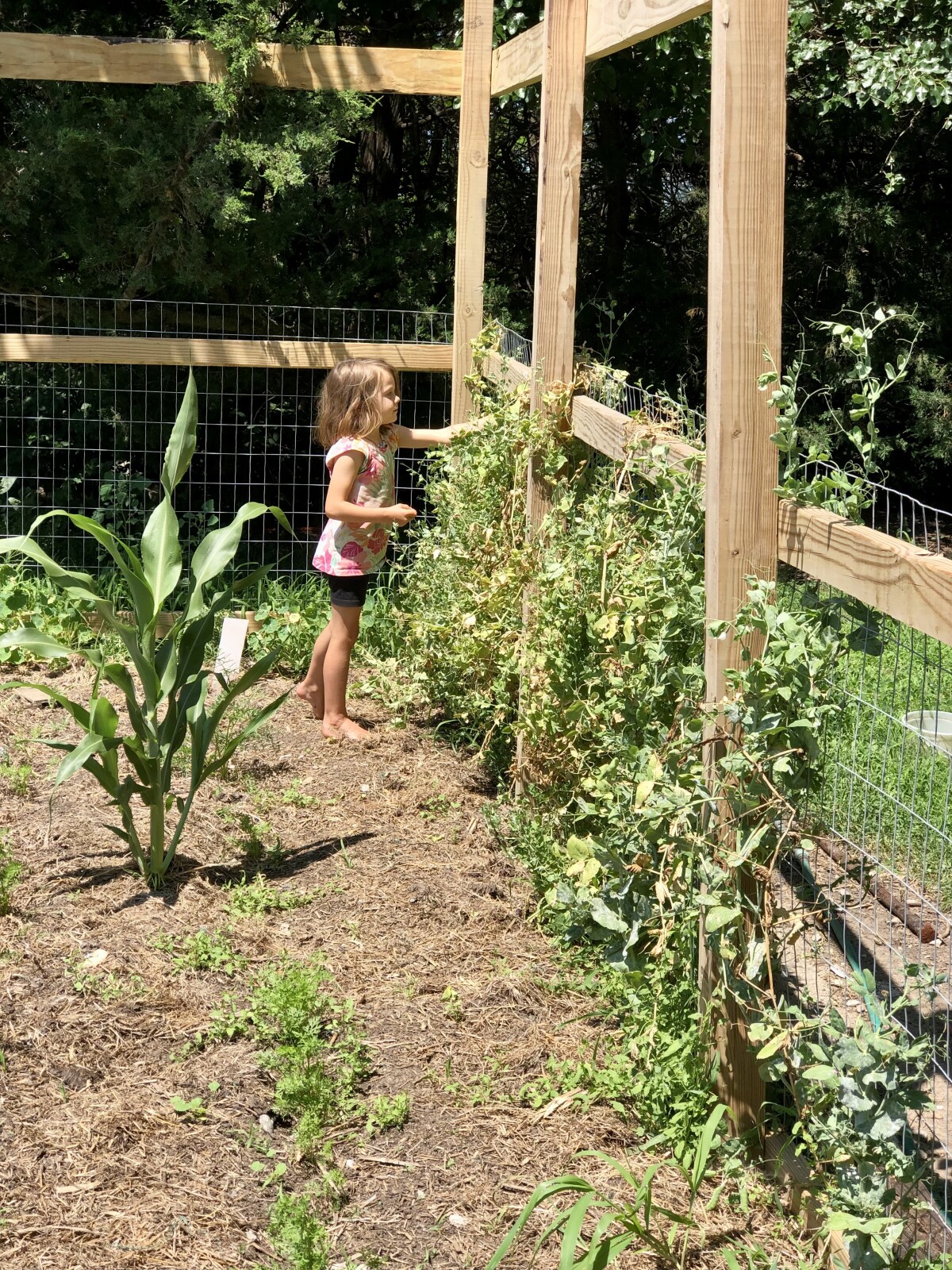
This post may contain affiliate links, which means that I may receive a commission if you make a purchase using these links, with NO additional cost to you.
If you have kids, you know snacks are a must for life to run smoothly. Around here the afternoon snack is the biggest to avoid the pre-supper hangry meltdowns. Supper can be delayed on the farm, especially in the summertime. But how do you keep easy snacks on hand on a tight budget?
Summertime is honestly the easiest. Part of the garden is planted specifically for easy kid access. The snack bins in the house are usually pretty empty in the summer. For the simple fact, there is food to eat in the garden. If I have the snacks in the house the kids return and eat the snacks inside, instead of the garden produced snacks.
What snacks do we grow? My kids love peas! The good news is the snap peas we can usually plant early and then plant again for a fall run. I only plant one row along the fence for them, because they take more time than I am willing to currently dedicate to preserving them for winter. Strawberries are another quick snack that can be everbearing and give snacks throughout the summer.
Cucumbers take a bit longer to get going but fill the gap nicely for variety in peas and between pea crops. Radishes are another quick growing snack my kids will grab while playing and can be planted a few rows at a time, 1 week apart, to have a continual supply. Lettuce and spinach are also something kids can grab and go, with the same planting strategy as the radishes.
End of summer and fall the fruit starts to come in here and the kids know those are also free range for snacking. They pick it and they can eat it. If we are harvesting a bunch for preserving, they eat from the plants, not the basket.
I do usually buy a few fruits to keep on hand. The secrete here is to buy what is in season and on sale. Local farmers markets can also give you good deals. You can also use this strategy if you find a really good deal. Break out the dehydrator and dry the fruit for snacks in the wintertime or road trips.
The wintertime we snack on more starchy things. Some that we preserved in the fall, like the dehydrated fruit. I usually buy bulk for the other snacks. A giant bag of oats, I can use for oatmeal, baking, and making granola for snacking.
Wanting a community to lean into? Join the FREE Feeding Your Family: Spend Less & Grow More group! This community is for the Mommas, looking to stay home and raise their kids, but unsure how to keep everyone fed and make ends meet. I share tips from my journey from the office, to half the income and feeding my family from home, while maintaining good nourishing food. Tips include: gardening, bulk buying, caning,/preserving, livestock, homesteading, and home remedies. Your family is precious and this group is to help you gain the knowledge and tools to keep your family well and not reliant on outside professionals. Remedies and tips are easy and simple for the busy momma, time is precious after all, including pregnancy, birth, young kids, and illness. Trust your Momma gut again! This community offers the resources + community you need to help get started on your journey and prepare for whatever future you envision. Join the Free Community
Click here to get the stories straight to your email:
For more on wellness tips click here:
For more on homesteading on your budget click here:
For more simple DIY updates click here:
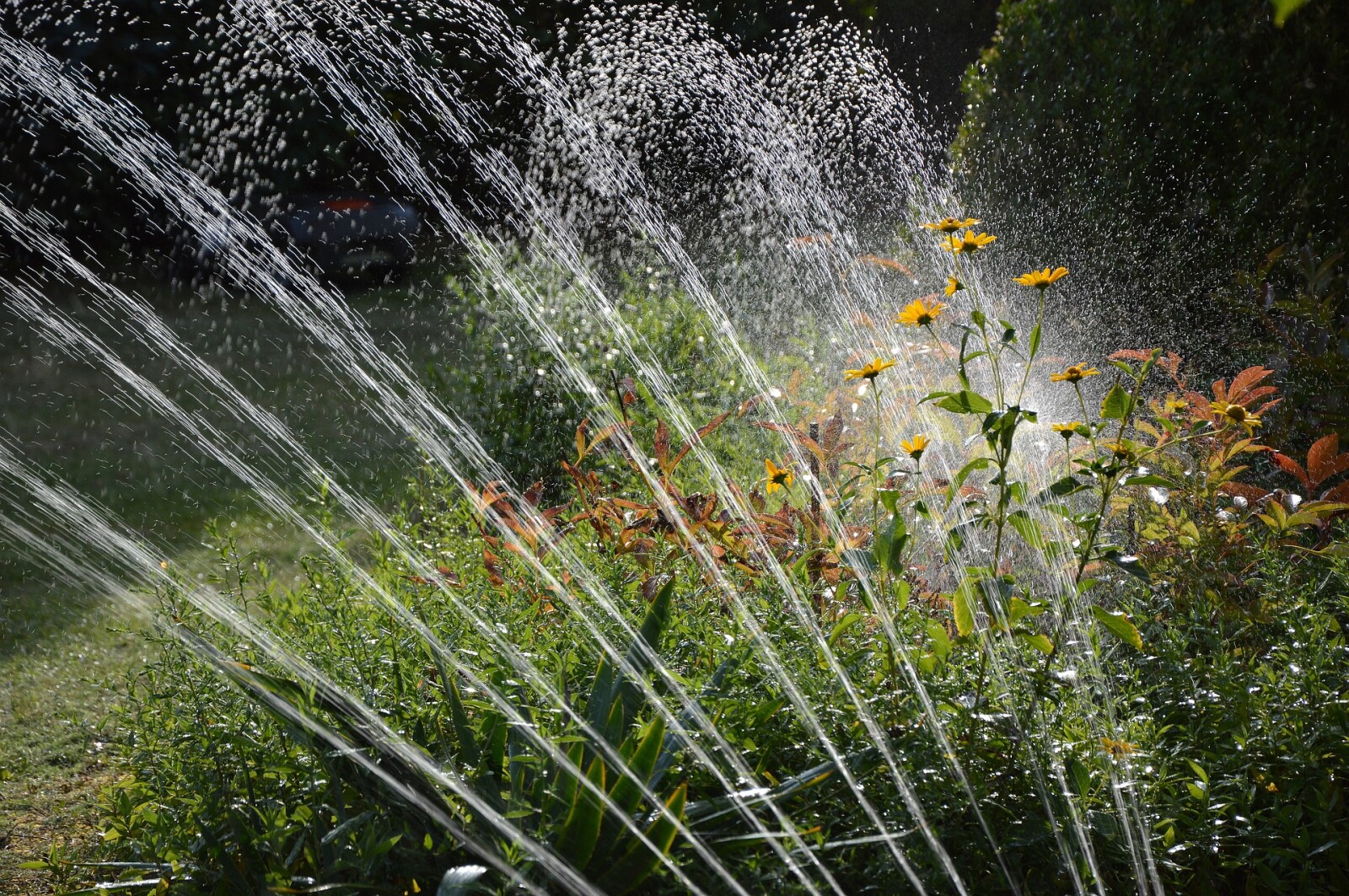
This post may contain affiliate links, which means that I may receive a commission if you make a purchase using these links, with NO additional cost to you.
At this point most of us have had to water the garden at least once. Was it manageable? Could it be better? Depending on where you live how judicious you need to be with water. There are different methods that have their own advantages and disadvantages.
If conserving water usage is a big one for you, a drip line is the way you will want to go. Drip lines deposit the water close to the ground at the base of the plant, so the water gets exactly where it needs to be, and no were else. You can even plum them up for raised beds by running the pipe along the base of the bed, then a hose up to the surface. These can be pricy to install the first time, but worth it in the amount of time saved watering individual plants and water saved. Make sure to have a drain or flush valve at the end for water to escape once the freezing temperatures arrive.
Hand watering is the cheapest and most water conserving method. Unless of course you have a 5- and 3-year-old running the hose. Then all bets are off. This works well for small beds or garden patches close to the house or hose. They are perfect for seedlings as well but can be difficult to get enough water to the plants as they mature. You can also control where the water lands to some extent and water the base of the plant avoiding getting wet leaves.
Broad cast sprinkler is probably the easiest method to cover a large area. The downside is you can lose quite a bit to evaporation, you will get the leaves wet, and will probably water the leaves and lawn a little. The big benefit is you can set it and walk away.
To get the proper amount of water to the plants, set a timer on your phone. You can also buy automatic water shut offs, but I have never actually tried them.
When plants are small seedlings, they need water frequently until their roots develop and can handle a bit of stress. Seedlings will need water about every 1-2 days depending on heat, wind, etc. Just make sure the top doesn’t dry out too much. Bigger plants can do with a good soaking about once a week.
My garden is divided into 5 areas. Now that it is established, each area is watered once a week and receives a good 3–4-hour soaking. I aim for morning, that way the leaves are all dry by night fall, to avoid mildew.
As I've grown in my journey as an entrepreneur, mom, gardener, and livestock owner, I struggled to find a planner that met my needs and kept me organized. So I MADE MY OWN. You can take a look at it on the link blow and buy it on amazon below
Don't want the whole calendar part? I got you! I pulled the gardening and animal care pages out and put them in a book all their own.
Wanting a community to lean into? Join the FREE Helping Your Family Homestead for Food group! This community is for the Mommas, looking to stay home and raise their kids, but unsure how to keep everyone fed and make ends meet. I share tips from my journey from the office, to half the income and feeding my family from home, while maintaining good nourishing food. Tips include: gardening, bulk buying, caning,/preserving, livestock, homesteading, and home remedies. Your family is precious and this group is to help you gain the knowledge and tools to keep your family well and not reliant on outside professionals. Remedies and tips are easy and simple for the busy momma, time is precious after all, including pregnancy, birth, young kids, and illness. Trust your Momma gut again! This community offers the resources + community you need to help get started on your journey and prepare for whatever future you envision.
Starting to garden doesn't have to be hard! I gathered all the tips I've learned over my gardening learning curve and made them into a simple course to jump start your gardening your life.
Supporting Your Family Naturally From the Inside Out community!! This community is for the Mommas, looking to Support Your Family from Nature for Wellness. Tips range from nutrition, herbals, detoxing, natural cleaning, and essential oils. Basically all the things I’ve learned slowly over the past 5+ years if my journey. We have moved off Facebook, so to better serve our community and be able to discuss openly option for providing for your family in the best way possible.
Join the FREE Community
Join the FREE Community
I've had 3 very different pregnancies. After the first traumatic birth, I learned better and how to care for my body naturally and prevent common pregnancy and birth problems before they arise. This quick course will get you the tools you need to have a naturally healthy pregnancy, labor, and delivery. My first pregnancy I had a normal western medicine all the things pregnancy. My second? I flipped to completely natural, no medicine. Bonus: Preventing Preeclampsia Without the Aspirin & Healing from Birth Trauma
Click here to get the stories straight to your email:
For more on wellness tips click here:
For more on homesteading on your budget click here:
For more simple DIY updates click here:
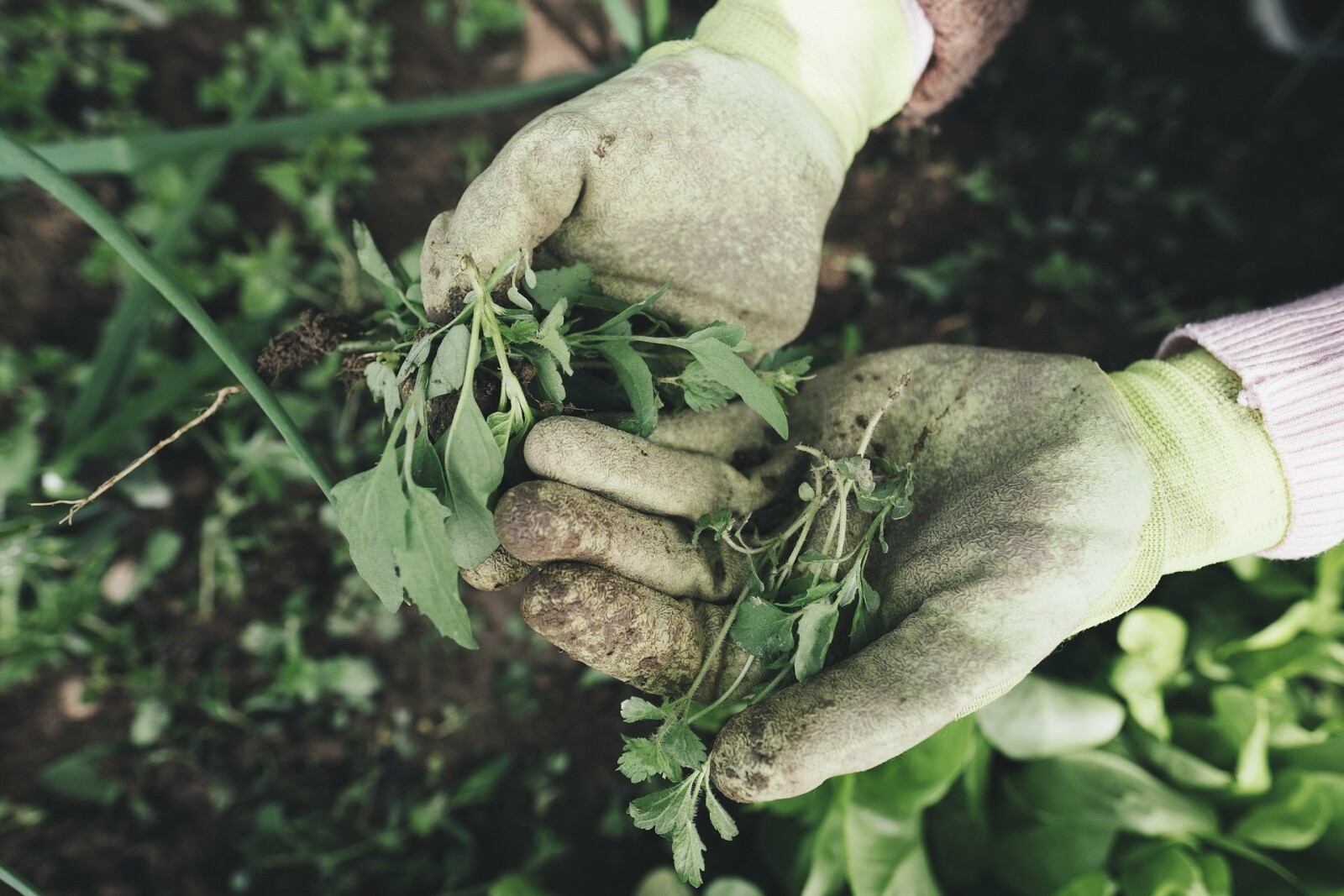
This post may contain affiliate links, which means that I may receive a commission if you make a purchase using these links, with NO additional cost to you.
When you have a garden weeding comes with it. There is the tender time between planting and the plants canopying that weeding is a daily job. It is the most tedious and possibly least rewarding part of gardening. However, it is the most important. Neglect the weeding you will not have a garden. Get the plants to the canopy stage and they can usually handle the few weeds that survive.
How do you keep up with all the weeds in that time? There are several strategies, to minimize weeding and keep the weeds manageable. Most of these strategies will work in both in ground gardens and raised beds.
First, plant close together. I know I’m telling you to break the rule on the packet. But seriously plant those rows close enough you can walk between them but that’s it. I usually do 1 foot max. As the plants grow the canopy will close off the sun to the ground between the rows and then weeds will not come up.
Second, mulch and mulch deep! This is not the 1-2 inches to keep water close, but 4-5 inches between the plants and rows. This keeps the weeds down and makes the few that do come up easy to pull.
Third, pick a small area and weed something every day. It doesn’t have to be a large space, but by weeding a little at a time it doesn’t become overwhelming.
For the larger areas that are more open, like in landscaping, there are a few options. The garden hoe works, but the weeds seem to just come back. You can use a strong vinegar and salt spray to knock the weeds back. You will still have to pull them out, but they will be easier to pull. I personally don’t like to spray chemicals to kill the weeds, but that is an option.
Another option is a weed burner. You can get handheld weed burner that literally burns the plant up. You can get electric, or propane powered ones. I prefer this method for my rock and patio areas.
As I've grown in my journey as an entrepreneur, mom, gardener, and livestock owner, I struggled to find a planner that met my needs and kept me organized. So I MADE MY OWN. You can take a look at it on the link blow and buy it on amazon below
Don't want the whole calendar part? I got you! I pulled the gardening and animal care pages out and put them in a book all their own.
Wanting a community to lean into? Join the FREE Helping Your Family Homestead for Food group! This community is for the Mommas, looking to stay home and raise their kids, but unsure how to keep everyone fed and make ends meet. I share tips from my journey from the office, to half the income and feeding my family from home, while maintaining good nourishing food. Tips include: gardening, bulk buying, caning,/preserving, livestock, homesteading, and home remedies. Your family is precious and this group is to help you gain the knowledge and tools to keep your family well and not reliant on outside professionals. Remedies and tips are easy and simple for the busy momma, time is precious after all, including pregnancy, birth, young kids, and illness. Trust your Momma gut again! This community offers the resources + community you need to help get started on your journey and prepare for whatever future you envision.
Starting to garden doesn't have to be hard! I gathered all the tips I've learned over my gardening learning curve and made them into a simple course to jump start your gardening your life.
Supporting Your Family Naturally From the Inside Out community!! This community is for the Mommas, looking to Support Your Family from Nature for Wellness. Tips range from nutrition, herbals, detoxing, natural cleaning, and essential oils. Basically all the things I’ve learned slowly over the past 5+ years if my journey. We have moved off Facebook, so to better serve our community and be able to discuss openly option for providing for your family in the best way possible.
Join the FREE Community
Join the FREE Community
I've had 3 very different pregnancies. After the first traumatic birth, I learned better and how to care for my body naturally and prevent common pregnancy and birth problems before they arise. This quick course will get you the tools you need to have a naturally healthy pregnancy, labor, and delivery. My first pregnancy I had a normal western medicine all the things pregnancy. My second? I flipped to completely natural, no medicine. Bonus: Preventing Preeclampsia Without the Aspirin & Healing from Birth Trauma
Click here to get the stories straight to your email:
For more on wellness tips click here:
For more on homesteading on your budget click here:
For more simple DIY updates click here:


